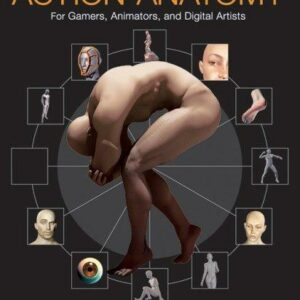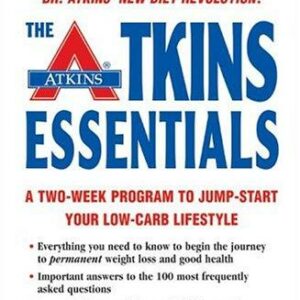The Microbiome Solution
$17.00
| Title | Range | Discount |
|---|---|---|
| Trade Discount | 5 + | 25% |
- Description
- Additional information
Description
Description
Live Dirty, Eat Clean—because every serious disease or chronic ailment begins in our gut. The author of Gutbliss and one of today’s preeminent gastroenterologists distills the latest research on the microbiome into a practical program for boosting overall health.
The microbiome—the collective name for the trillions of bacteria that live in our digestive tract—is today’s hottest medical news topic. Dr. Robynne Chutkan explains how the standard Western diet and our super-sanitized lifestyle are starving our microbes, depleting the “good bugs” that are crucial for keeping us healthy, and encouraging overgrowth of exactly the wrong types of bacteria.
But, as Dr. Chutkan explains, there are effective lifestyle and diet changes we can make to reverse this damage. Dr. Chutkan has helped thousands of patients suffering from a disordered microbiome with her comprehensive Live Dirty, Eat Clean Plan, designed to remove damaging medications and foods, replace important bacteria that have been lost, and restore health. The Microbiome Solution offers: a microbiome overview, nourishing recipes, questions for your doctor, preventative and recovery health tips, and the next frontier for a severely troubled microbiome—the stool transplant.
This is the first book to provide a practical, effective plan for replenishing and optimizing the vital ecosystem in our gut. Start living dirty and eating clean today to ward off disease and begin the path toward lifelong, vibrant health.Praise for The Microbiome Solution
“Gastroenterologist Chutkan (Gutbliss) makes a strongly argued proposal that people should ‘live dirty’ and ‘eat clean’…A thoughtful approach to health and wellness that’s well worth the time of readers.”
—Publishers Weekly
“We are truly in the middle of an epidemic—through our diet and our lifestyle we are unwittingly destroying the good bacteria in our bodies, the crucial allies we need to arm us against disease. In this life-changing book, Robynne Chutkan gives you simple, foolproof guidance to repair this vital ecosystem and bring you optimal health every day. Read this important book and discover the small changes that can make a huge impact.”
– Frank Lipman, M.D., founder of Eleven-Eleven Wellness Center and author of the New York Times bestseller The New Health Rules
“The exciting research on the microbiome has the promise to help many take charge of their health and reverse chronic ailments But what is so groundbreaking about this book is that it shows you how to put these scientific breakthroughs into practice, step-by-step. With Dr. Robynne Chutkan as your guide, you’ll understand how overuse of antibiotics, the standard Western diet and a super-clean lifestyle starve your microbiome, and learn the essential tools to attain sustainable good health. This book is empowering, and indispensable for anyone trying to get or stay well.”
–Terry Wahls, M.D., author of The Wahls Protocol
“I whole-heartedly agree with Dr. Chutkan that there is a rising epidemic of vague symptoms often attributable to a damaged microbiome, from bloating and food intolerances to brain fog and weight-loss resistance. Her mantra ‘Live dirty, eat clean!’ is a scientifically-sound solution. Try her simple program – and get ready to feel the changes immediately. It’s the proven way to build up our ‘good bugs’ and keep your body strong and vibrant, ready to fight illness and disease. It’s something we can all do, each and every day. You will truly transform your health!”
–Sara Gottfried, M.D., author of the New York Times bestsellers The Hormone Cure and The Hormone Reset Diet
“The Microbiome Solution is the medicine we all need to truly flourish.”
–Christiane Northrup, M.D., author of the New York Times bestsellers Goddesses Never Age, Women’s Bodies, Women’s Wisdom, and The Wisdom of Menopause
“We live in symbiosis with trillions of bacteria that play a crucial role in determining our health and vitality. The Microbiome Solution is an eye-opening account of how supersanitation, antibiotic overuse and the Western diet collaborate to promote chronic disease by disrupting the gut microbiome’s ecological harmony and balance. Dr. Chutkan, a leading integrative gastroenterologist, presents a trailblazing program to heal your body from the inside-out by getting dirty and eating clean. Read this marvelous book and transform your health..one gut microbe at a time.”
-Gerard E. Mullin MD, Associate Professor of Medicine The Johns Hopkins University School of Medicine and Author of The Gut Balance Revolution
Praise for Gutbliss
“I read it cover to cover.”
– Natalie Morales, Today Show
“Dr. Chutkan candidly explores how digestive snafus can wreak havoc with professional, social and sexual relationships, using anecdotes about patients who suffered terribly before finding relief by changing their habits, conquering crummy diets and identifying medical conditions that exacerbated their misery. Her plan may be worth trying—even if it means giving up some bubbly.”
–The Wall Street Journal
“Packed with no-nonsense explanations, real- life patient stories, and remedies, this guide will empower women to recognize their particular digestive health issues and work proactively with their medical professionals to prevent, treat, and solve them.”
– Publishers Weekly
“Gutbliss is loaded with helpful, leading edge information that all women need to know for optimal bowel health. I highly recommend this book!”
– Christiane Northrup, M.D., author of THE WISDOM OF MENOPAUSE
“Dr Chutkan blasts away the bloat as she tastefully explains the guts of our problems.”
– Mehmet Oz, M.D.
“Millions of Americans suffer needlessly from digestive problems. Gut issues are at the core of many health problems including autoimmune disease and even obesity and diabetes. Dr. Robynne Chutkan maps out a clear strategy for gut health and restoring optimal health. If you have digestive problems, look no further, and buy this book!”
–Mark Hyman, M.D., author of THE BLOOD SUGAR SOLUTION
“If you’re tired of dreaded bloat or muffintop, Dr. Chutkan offers a novel prescription for making your gut work for you, not against you—and her 10-day plan is scientifically robust yet transformative. Get the book, and give her 10 days. You’ll discover the small hinge that swings big doors.”
– Sara Gottfried, M.D., author of THE HORMONE CURERobynne Chutkan, M.D., is one of the most recognizable gastroenterologists working in the United States today. The author of Gutbliss, Dr. Chutkan has a B.S. from Yale and an M.D. from Columbia, and is a faculty member at Georgetown University Hospital. An avid snowboarder, marathon runner, and Vinyasa yoga practitioner, she is dedicated to helping her patients live not just longer but better lives.
Acknowledgments
Introduction:
Live Dirty, Eat Clean
MY HUSBAND ISN’T completely on board with my plan to sell our house in the city, move to a farm, raise animals, and grow our own food. But since much of what’s available in the supermarket is full of chemicals and devoid of any real nutrients, taking control of what we eat and making sure it comes from nature, not a factory, strikes me as a good idea. I’m fortunate to live in Washington, D.C., where farmers’ markets and community supported agriculture (CSA) shares are plentiful, so moving to an actual farm may seem a little extreme. My real motivation is that I want my daughter to grow up dirty, literally—as in easy on the soap and shampoo, heavy on the mucky animal chores. I shared her saga of antibiotic misadventure in my first book, Gutbliss. Since then, I’ve seen hundreds of patients with stories similar to hers, and I’ve become even more convinced that damage to the microbiome—the trillions of organisms that call our digestive tract home—is at the root of many of our current health problems. Figuring out how to undo that damage and “rewild” ourselves has become a focus of my medical practice and a personal journey in our household. Living a little dirtier and eating a little cleaner is definitely part of the fix.
Unwilding Ourselves
Our ancestors had a symbiotic relationship with their microbes that evolved over millions of years and served them well. They were benevolent hosts to a dense jungle of microscopic creatures, including worms and other parasites that actually contributed to their health. Large predators and the absence of food were their main threats, not the hundreds of diseases that afflict us today. The irony is that as we’ve “unwilded” our bodies and our environment in an effort to become healthier, we’ve actually become a lot sicker in some important ways.
Urbanization and modern medicine have undoubtedly improved our lives, but they’ve also introduced practices—overuse of antibiotics, chlorination of the water supply, processed foods full of chemicals and hormones, microbe-depleting pesticides, increasing rates of Cesarean sections—that have ravaged our microbiome, diminishing the total number of organisms as well as the diversity of species. The result is an increase in a wide range of modern plagues, including asthma, allergies, autoimmune diseases, diabetes, obesity, cancer, irritable bowel syndrome, anxiety, and heart disease. The rise of these diseases is inextricably intertwined with the full-on assault on our microbiome resulting from our super-sanitized lifestyle.
A decade ago, who knew that every antibiotic dispensed during cold and flu season was potentially bringing us one step closer to a diagnosis of Crohn’s disease, or making us fatter? None of us doing the prescribing realized that we might be paving the way to real illness in our well-meaning attempts to cure the sniffles. The prevailing wisdom was—and to some extent still is—that germs are bad and we should get rid of them, and antibiotics are good and we should use them. And use them we have: the average American child will receive more than a dozen courses of antibiotics before reaching college, primarily for minor illnesses that require no treatment at all. Despite the tremendous amount of research in the last few years connecting the dots, many physicians and their patients remain in the dark, blaming each manifestation of microbial discord on bad luck or bad genes, never questioning or understanding the root cause.
Less Is Often More
My own understanding came only after my daughter was treated with antibiotics at birth and throughout infancy, setting off a series of events that, a decade later, continue to affect her health. I had been trained at world-class institutions and practiced gastroenterology at a leading teaching hospital, but, like most physicians, I had no idea that the antibiotics I thought were so helpful were actually creating illness by decimating her microbiome at a time when it was most vulnerable, making her more susceptible to infection and inflammation. I wish I had known then what I know now and what I continue to learn every day: that illness is often the result of a decreased, not increased, bacterial load, and that less is sometimes more when it comes to medical intervention.
Rehab for Your Microbiome
Every day in my gastroenterology practice I see patients with the telltale signs of a disordered microbiome: bloating, leaky gut, irritable bowel, gluten intolerance, Crohn’s disease, ulcerative colitis, eczema, thyroid disorders, weight problems, fatigue, and brain fog. It’s a veritable epidemic of “missing microbes,” as infectious disease specialist Martin Blaser, MD, describes it. The symptoms vary, but the history doesn’t: overzealous use of antibiotics, often accompanied by a highly processed Western diet low in indigestible plant fiber—the preferred food of gut bacteria.
Repopulating the microbiome can be a challenging process, but the good news is that most people do get better. Your microbes are constantly changing and evolving, and even if they’ve been severely damaged by medications, infection, or diet, paying attention to what you put in and on your body can yield huge improvements. The microbiome you have today isn’t the one you were born with, nor is it the one you’ll have next year or even next week. It’s highly dynamic, constantly changing and adjusting in response to your internal and external environment.
In medical school, I was taught how to eradicate people’s germs. A quarter-century later, I’m teaching my patients how to restore theirs: which foods to eat, how to care for their bodies and their homes without stripping away their microbes, what questions to ask when their doctor recommends an antibiotic, and whether a probiotic or even a stool transplant might be of benefit. These, I believe, are the new and essential survival skills for thriving in our super-clean era. You’ll find them all in the Live Dirty, Eat Clean Plan at the end of this book.
When Dirty Children Grow into Clean Adults—My Rewilding Journey
I spent my early childhood in the tropics, eating food from my grandfather’s farm grown in rich soil fertilized by a herd of goats (which we sometimes also ate) instead of chemicals. We lived in the hilly suburbs and roamed around outside with our dog after school, exploring gullies, picking mangoes and oranges from the fruit trees in our backyard, and acquiring the occasional case of pinworm as a result of our barefoot explorations. In our household there was lots of attention paid to schoolwork and athletics, but shoes, showers, and shampoos were more or less optional. My father was an orthopedic surgeon whose great fear was that his children would grow up to be hypochondriacs, so his medical advice for whatever ailed us—from the flu to a sprained ankle—was always the same: go lie down and you’ll feel better in the morning. We were vaccinated for the big stuff (polio and smallpox) but didn’t sweat the small stuff (whooping cough and chicken pox). My daughter had more visits to the doctor before she was in preschool than I’ve had in my entire lifetime.
So, despite my dirty childhood filled with organic, homegrown food, protective parasites, lots of time outdoors, and limited contact with an overzealous medical system, how did I end up in adulthood with not one but three manifestations of microbial discord: eczema, rosacea, and yeast overgrowth? It took a while. I managed to weather potent microbial disruptors like the antibiotics prescribed in college for acne and twenty years of birth control pills (we’ll talk about this more in Chapter 5) with no ill effects. But as life got more complicated, unrelenting stress and the cookies, cakes, and candy I consumed to combat it were my ultimate undoing. A Western diet high in sugar and fat promotes growth of the wrong types of bacteria in your gut, and a lifestyle that leaves literally no time to go outside and smell the roses can be the straw that breaks the camel’s back, particularly if you have additional risk factors, as I did, such as significant antibiotic use.
Disease Begins in Your Microbiome
My firsthand experience with how poor nutrition and stress can unmask the effects of a damaged microbiome and lead to a multitude of symptoms is representative of what most of the patients I see in my office have experienced: a decline in overall well-being characterized by seemingly unrelated conditions that appear out of nowhere, leaving them scratching their head and wondering what’s going on.
Microbial disruptors are everywhere—in the food we eat, the water we drink, the products we use, and the medications we take—and the clinical manifestations of a disrupted microbiome are varied and show up in people of all ages and stages. Chances are there’s someone in your family with asthma, allergies, eczema, thyroiditis, diabetes, arthritis, or any of the many disorders that we’re now discovering have the same root cause. A damaged microbiome isn’t the only reason people develop these conditions, but it’s often a major contributor that interacts with genetic and environmental factors to create a perfect storm of disease. That’s why it’s more important than ever to understand the complex and critical role bacteria play in our health, so that if and when yours is compromised, you can connect the dots and start to heal yourself.
The solutions you’ll find in this book are based on clinical trials in our own patient population at the Digestive Center for Women, data from other scientific studies, published papers, trial and error, anecdote, patient testimonials about what’s worked for them, and careful observations accrued over almost two decades of taking care of people with all kinds of bacterial imbalance—from serious autoimmune illnesses such as Crohn’s disease and ulcerative colitis to complaints of gas and bloating. They’re also based on my own journey of exploration and healing necessitated by my health challenges.
The new paradigm of bacteria as friend rather than foe is at the heart of a revolution in health care that’s forcing us to reexamine how we live, as well as our medical practices, with new microscopic eyes, and to consider how modern life and our everyday choices affect the life of our microbes—and how our microbes in turn affect us. What has become very clear is that our individual and collective health depends on it. My sincere hope is that this book will provide you with the microbiome solution that will help you reclaim your health and vitality and set you on the path to a dirtier and disease-free life.
See you on the farm!
part 1
CHAPTER 1
||||||||||||||||||||||||||||||||||||||||||
OUR MICROBES ARE intimately involved in every aspect of our health—from ensuring our digestive well-being to influencing our likelihood of being obese and our risk of developing cancer or diabetes. They even play a role in our brain chemistry and mental health, affecting our moods, our emotions, and our personalities. We are, it seems, single individuals comprised of multiple living, breathing, moving parts. The more we learn about this fascinating microscopic community, the clearer it becomes that our fate is inextricably tied to theirs, making it essential that we learn more about where our microbes come from, what they do, and why we literally can’t live without them.
Meet Your Microbiome
The microbiome refers to all of the organisms that live in or on your body: all of the bacteria, viruses, fungi, protozoa, and helminths (worms, for those of us who have them), as well as all of their genes. A staggering hundred trillion microbes that include thousands of different species inhabit your nooks and crannies—with more than a billion bacteria in just one drop of fluid in your colon alone.
Your unique microbial footprint develops over your lifetime, and it reflects everything about you: your parents’ health, how and where you were born, what you’ve eaten (including whether your first sips were breast milk or formula), where you’ve lived, your occupation, personal hygiene, past infections, exposure to chemicals and toxins, medications, hormone levels, and even your emotions (stress can have a profound effect on the microbiome). The end result is a microbial mix so distinctive from person to person that yours is a more accurate identifier of you than your own DNA.
We’ve known about the microbiome since the 1600s, when Antoni van Leeuwenhoek first looked at his own dental plaque under the microscope and described “little living animalcules, very prettily a-moving.” But it’s taken us a few centuries to figure out that these fellow travelers might actually be helping rather than hindering us, with a specific purpose that’s very much aligned with our own survival. The overwhelming majority of our microbes aren’t germs that cause disease. Quite the contrary—they’re an essential part of our ecosystem and play a vital role in keeping us healthy.
How do we get from germ-free fetus to living, breathing petri dish, colonized with trillions of bacteria? Let’s start at the cradle and work our way toward the grave, to find out exactly how our microbiome evolves and the crucial role it plays at every stage in our development.
Pregnancy
Long before we enter the world, our mother’s microbiome starts to prepare for our arrival. One of the most dramatic changes happens in her vagina. During pregnancy, cells in the vaginal lining ramp up production of a carbohydrate called glycogen, sending glycogen-loving Lactobacillus bacteria into a feeding frenzy and increasing their numbers. Lactobacilli convert lactose and other sugars to lactic acid, creating an acidic, unfriendly environment that helps to protect the growing fetus from potential invaders.
Bacteria don’t just protect us from undesirable germs that can enter via the vagina; they also nurture us. In the third trimester of pregnancy, Proteobacteria and Actinobacteria species increase in number and cause a corresponding rise in the mother’s blood sugar and weight gain in her breasts, with the specific goal of ensuring adequate growth and breast milk for the baby. Transplanting gut bacteria from late-trimester pregnant women into nonpregnant mice produces identical changes in the mice—confirming that the transformation is indeed mediated by gut bacteria, not hormones.
In addition to our founding species of bacteria, we also receive protective antibodies from our mother through the placenta. Armed with these antibodies and our own few but plucky microbial soldiers, we’re ready to make our entrance into the world. But exactly how we enter isn’t just a matter of convenience; it has significant microbial repercussions that continue to affect our health well into adulthood.
Birth
During a normal delivery, the baby’s head turns to face the mother’s rectum as it crowns and exits the birth canal. This turning brings the baby’s nose and mouth into direct contact with her vaginal and rectal contents. What better way to get inoculated with a good dose of bacteria than to come face-to-tush with the source? A study published in Proceedings of the National Academy of Sciences showed that babies born vaginally are colonized with Lactobacillus species and other “good bacteria,” while babies born by C-section tend to have more common hospital “bad bacteria” like Staphylococcus that are associated with illness and infection.
This brief act of swallowing a mouthful of our mother’s microbes as we enter the world confers unbelievably important benefits. It turns out that exposure to bacteria is a critical early step in the development of our immune system. C-sections bypass this crucial event and are associated with higher rates of asthma, allergies, obesity, type 1 diabetes, and other autoimmune conditions. I’ll explain the importance of early microbial exposure in detail in Chapter 3, and the modern plagues that are a result of not having enough of it.
Breast-feeding
Human milk oligosaccharides (HMOs) are the third-most common ingredient in breast milk, despite the fact that they’re completely indigestible by infants. HMOs are indigestible because they’re not there to feed the baby. They’re there to feed the baby’s bacteria—specifically, Bifidobacterium, present in high numbers in breast-fed infants. Bifidobacterium repels Staphylococcus and other harmful microbes on the mother’s nipple, so it’s an essential part of the baby’s microbial arsenal. While Bifidobacterium gorges on HMOs, Lactobacillus in the newborn’s gut breaks down sugars and the other digestible components of breast milk—an incredibly well-designed example of the symbiotic relationship between humans and microbes.
Breast-fed babies in the United States have an astounding 20 percent higher survival rate than their formula-fed peers. I’ll discuss the worrisome trend of formula over breast milk in Chapter 7, where we examine the microbial implications of some of our modern practices.
Infancy
When we are babies, everything eventually ends up in our mouth. It’s one of the ways we interact with our environment. It’s also one of the ways our environment interacts with our microbiome, allowing bacteria from our home, our siblings, and even our pets to gain access to our gut and help train our immune system to distinguish friend from foe. Factors like family size, early nutrition, and the quality of our water supply have a profound effect on our blossoming microbiome.
Not surprisingly, as infants our microbiome most closely resembles that of other household members, especially our mothers. But it’s a constantly changing and evolving mix, with lots of species diversity, and events like a fever, a dietary change, or a course of antibiotics can have a major ripple effect. Within a few weeks after birth, bacteria in various parts of our body start to branch out and specialize, and within a few months, the number of species starts to rise, increasing from about a hundred in infancy to a thousand or more by adulthood.
Childhood to Adulthood
By age three our microbiome is almost fully formed and is very similar to that of an adult, although major changes like puberty, the onset of menstruation, pregnancy, and menopause are associated with huge microbial shifts. Some of the physical changes associated with puberty, such as increased oil production that can lead to acne, or more pungent body odor under the arms and in the groin, are actually the result of changes in bacteria, as different species become more or less dominant.
By the time we become senior citizens, we’ve lost much of our bacterial diversity, and our microbiome starts to resemble that of others in our peer group. Shifts within various microbial populations continue to occur, but as we get older, our microbiome becomes more stable, tending to revert to its previously established baseline after events like an infection or a course of antibiotics.
Renewal
We start out in the womb with no microbes at all, and we eventually acquire trillions. What happens to all of those microbes when we die? Interestingly, the microbes aren’t recycled. They die with us, and each subsequent generation goes through its own cycle of microbial rebirth, starting from scratch and working its way up to an incredibly well-stocked microbial kingdom, well adapted (let’s hope) to the requirements of that generation.
Diversity of species is a vital part of maintaining a balanced ecosystem in the outside world, and it’s also crucial in the microscopic world inside us. Unfortunately, modern life has made microbial depletion part of our legacy, with decreased diversity in each successive generation as a result of medications, our overprocessed diet, and our super-sanitized lifestyle. Americans today have only about two-thirds as many bacterial species as native tribesmen in the Amazon who haven’t been exposed to antibiotics. As we’ll learn in the second part of this book, restoring those lost microbes takes real commitment.
While there is no perfect microbiome, some are clearly healthier than others, notwithstanding the incredible variation from one to the other. The Human Microbiome Project and other research efforts like it seek to establish what the “normal” human microbiome looks like today—an important endeavor, considering the rate at which our microbial landscape is changing. Companies like uBiome allow the citizen scientist to catalogue his or her own microscopic habitat, compare it to others, and reassess it as diet and habits change.
The human microbiome may well be the next big frontier in medicine, providing answers to why we get sick and novel solutions for how to heal ourselves. In the next chapter we’ll learn more about what our gut bacteria actually do—besides make gas—and why they’re so essential to our health and well-being.
CHAPTER 2
||||||||||||||||||||||||||||||||||||||||||
THINK OF YOUR BODY as a factory. Organs like your lungs, kidneys, and liver represent the machinery that keeps production moving: extracting oxygen, filtering blood, removing toxins, synthesizing hormones, and performing all of the other complicated tasks that keep us alive. Some of the tasks are automated, but most of these assembly lines require constant monitoring, maintenance, and adjustment.
We house the machinery, but who operates it? How does a complex process like, for example, digestion, actually happen? Who helps break down the food and determines what gets absorbed versus what gets excreted? How do we distinguish between real infection and colonization with harmless bacteria? Who tells our immune system when to rally the troops and when to ignore benign interlopers that pose no threat?
Our microbes do! We’ve evolved over millions of years to host an incredible army of worker bee microbes that are gainfully employed assisting in all of our bodily functions. They produce substances our bodies require but can’t make. They fight most of our battles for us. They even turn our genes on and off, activating those we need and dismantling those we don’t. In exchange, we provide room and board.
Since we’re their host and they rely on us for their survival, most of our microbes are invested in our well-being, although under certain circumstances they can turn on us and cause bad things to happen such as infection or even cancer. We can categorize our microscopic roommates into three main groups:
• Commensal bacteria that cohabit peacefully with us
• Symbiotic organisms (sometimes called mutualists) that help keep us healthy
• Pathogens (also known as opportunistic flora) that can do us harm
It’s a Jungle in There
Most human bacteria fall within four general phyla, or families: Actinobacteria, Firmicutes, Proteobacteria, and Bacteroidetes—each one consisting of many different species. Different parts of the body have different microbial communities based on variations in things like oxygen content, moisture, and blood flow. Anaerobic species that don’t require oxygen predominate in the gut; Staphylococci thrive on the skin; and the same Streptococci used to make Swiss cheese inhabit the mouth and upper airway. There are pathogenic (i.e., harmful) forms of all of these bacteria, but the ones that reside with us on a daily basis are mostly harmless, particularly when kept in check by adequate amounts of their symbiotic cousins.
TABLE 2–1 • Predominant Bacteria Present in Humans
An enterotype is a classification based on ecosystems in the gut, and a way to stratify people based on the relative abundance of different species. In 2011, researcher Peer Bork described three specific enterotypes in humans: high levels of Bacteroides characterize type 1; type 2 has few Bacteroides and lots of Prevotella; and type 3 has high levels of Ruminococcus. Different enterotypes don’t seem to be influenced by age, gender, or nationality, but they are profoundly affected by long-term diet. A Western diet high in protein and animal fat is associated with Bacteroides (type 1), while Prevotella species (type 2) dominate in those who consume more carbohydrates, especially fiber. Different enterotypes are associated with predisposition to particular disease states, such as obesity and inflammation, confirming that what you eat is a powerful influencer of your overall health. In the future, we may be able to prescribe enterotype-specific diets and probiotics designed for maximal efficacy based on the abundance of various species.
What Do Gut Bacteria Do?
Symbiotic organisms—the quintessential good bacteria—have lots of important jobs. They help us digest food, maintain the integrity of our gut lining (part of the epithelial barrier that keeps bowel contents separate from the rest of the body), crowd out harmful bacteria, and train our immune system to distinguish between friend and foe. They also convert sugars into short-chain fatty acids (SCFAs) that intestinal cells use for energy, and they synthesize many of the enzymes, vitamins, and hormones that we can’t make on our own. Food can’t be properly broken down and its constituent parts can’t be fully absorbed without these essential gut bacteria, which means that even if you’re eating a super-healthy diet, if you don’t have enough of them, you may not be able to absorb and assimilate all of the vitamins and nutrients in your food.
Most of the bacteria in your gut are anaerobic, meaning that they thrive in areas with little or no oxygen. As you travel from the top to the bottom of the intestines, the amount of bacteria increases, so the stomach and small intestine have a lot less than the colon. Some bacterial species set up shop in the intestinal lining, while others just pass through, sometimes reproducing while in transit before being excreted in the stool.
TABLE 2–2 • What Do Your Gut Bacteria Do?
• Convert sugars to short-chain fatty acids (SCFAs) for energy
• Crowd out pathogens
• Digest food
• Help your body absorb nutrients such as calcium and iron
• Keep pH balanced
• Maintain the integrity of the gut lining
• Metabolize drugs
• Modulate genes
• Neutralize cancer-causing compounds
• Produce digestive enzymes
• Synthesize B-complex vitamins (thiamine, folate, pyridoxine)
• Synthesize fat-soluble vitamins (vitamin K)
• Synthesize hormones
• Train the immune system to distinguish friend from foe
Immune Regulation
Digestion isn’t the only process that relies on the presence of gut bacteria. Exposure to lots of different microbes—both good and bad—is essential for priming and training your immune system, so that later on it’s able to distinguish between harmless organisms that it should ignore and dangerous pathogens that it needs to respond to. In Chapter 7 we’ll find out what happens when we super-sanitize our environment and miss out on that crucial early microbial exposure.
Gene Modulation
We have about twenty-three thousand human genes and eight million microbial ones. Results from large-scale human microbiome studies suggest that genes from gut bacteria play an important role. They provide instructions for essential functions like carbohydrate metabolism and enzymatic detoxification—instructions that are missing from our own human genome. Bacteria also help determine which diseases are expressed, turning various human genes on and off in response to the body’s internal milieu, which can influence whether or not a disease that you’re genetically predisposed to actually develops. Modulation of our genes by bacteria may explain why inherited diseases don’t always afflict family members equally—even in identical twins, who have the same genes but different microbes.
You’re Only as Healthy as Your Gut Bacteria
Ever notice how some people never get sick when everyone else has the flu? They were probably exposed to the same virulent virus, but because they have a healthier microbiome populated with more essential microbes, they’re able to crowd out the pathogens and stay healthy. Antibiotics can actually make you more susceptible to infection because they deplete essential bacterial species that can fight off viruses and dangerous bacteria. A recent study injected a bacterial protein into mice suffering from Rotavirus—a diarrheal illness that kills half a million children each year—and successfully halted the infection. The same protein also showed efficacy against other viruses, including influenza, demonstrating the important role bacteria play in protecting against viral infection.
Microbial health is one of the factors that determines who survives potentially deadly viruses. The very young, whose microbiome is still developing, and the very old, who have fewer microbial species and less diversity, tend to be the most vulnerable. Overzealous antibiotic use also puts you at risk by stripping out the good microbes along with the bad. Of course, additional variables like coexisting medical problems and how well nourished you are play a role, too, but those factors are also tied to the health of your microbiome, so having enough good bacteria looms large as a way to protect yourself from acute as well as chronic illness.
Allison is a patient I see for chronic constipation and bloating. While her gastrointestinal (GI) symptoms have improved a lot with adding more fiber to her diet, she continues to be plagued by chronic sinus infections. Every time I see her she’s either on an antibiotic or just finished taking one. The more antibiotics she takes, the more sinus infections she seems to get. We’ll take an in-depth look at how heavy antibiotic use can compromise your microbiome in Chapter 4, “Pharmageddon and the Antibiotic Paradox.”
Recognizing that infection is frequently a result of bacterial imbalance as opposed to infestation with any one particular bad bug helps us to be more judicious in our approach to treatment. We all have organisms within us whose growth, if left unchecked, can reach problematic proportions. The solution isn’t to embark on a search-and-destroy antimicrobial mission, devastating our essential bacteria along with the bad guys, but rather to repopulate and rebalance, adding good bacteria through dietary changes, microbe-friendly practices, prebiotic foods, and a well-chosen probiotic supplement. My Live Dirty, Eat Clean Plan will tell you exactly how to accomplish that, improving any health issues you have now and helping to safeguard against future illness.
The Nose Knows
Our different anatomical microbial communities have their own distinctive signature odors, based on what the various bacteria consume and the waste products they make. Morning breath is a great example of how shifting microbial populations are associated with a distinct change in odor. Most of us sleep with our mouth closed, breathing mostly through our nose. That leads to lower levels of oxygen in the mouth and an overnight increase in anaerobic bacteria, whose by-products give our breath a sour smell. People who have inflammation in their colon from Crohn’s disease, ulcerative colitis, or acute infection also have significant shifts in the composition of their gut bacteria—changes that I can smell even before seeing when I insert the colonoscope to examine the colon.
Most animals can detect variations in the microbiome. They sniff each other for recognition, to tell whether females are in heat, and to detect fear in their prey. If we deigned to take a whiff, we’d notice lots of identifying features, too—who has smelly feet, eats a lot of meat, or is stressed out—it’s all reflected in our microbiome. I smell my daughter all the time (much to her dismay), and as she approaches puberty, I’m noticing lots of changes. But mostly I just know what she smells like, the specific aroma that is unique to her and that I like to think I could recognize anywhere.
Growing a Good Gut Garden
As I’ve mentioned, there’s incredible microbial variation from person to person, which makes it difficult to define exactly what the ideal microbiome looks (or smells) like. Our health depends on having the right balance, without any one species becoming unnaturally dominant or submissive, and with essential bacteria sufficiently represented.
Gut bacteria are influenced by all the factors I’ve already mentioned, like whether you were breast-fed, your age, your gender, your occupation, and where you live. But what you eat is emerging as the most influential factor, since bacteria follow the food. So rather than focusing on what you should be eating to lose weight, or to lower your cholesterol, or to avoid diabetes, you should really be asking yourself what you should be eating to grow a good gut garden, because disease is rare when gut bacteria are balanced, bountiful, and diverse.
The other essential step is recognizing what threatens your gut garden’s growth. Being aware of the interlopers and inclement conditions that will reduce your victory garden to an overgrown or blighted plot is key. In the next part of this book we’ll explore in detail how the microbiome gets messed up, and what you can do to preserve yours.
part 2
CHAPTER 3
||||||||||||||||||||||||||||||||||||||||||
MANY OF US were brought up to believe that it’s better to be clean than dirty. But evidence is mounting to show that if you start from that premise, you will arrive at the wrong destination as far as human health is concerned. The microbial communities established in our bodies at birth, during infancy, and in early childhood mold our health as we grow and help determine whether or not we develop illness. The unwilding of our internal landscape has created health challenges we never anticipated and led to the emergence of a new breed of disease.
Microbes and Our Modern Plagues
In 1932, gastroenterologist Burrill Crohn, MD, and his colleagues at Mount Sinai Hospital published a paper describing fourteen patients who had peculiar findings in the small intestine at surgery that were unlike anything that had previously been seen. The abnormalities were in the end of the small intestine—an area known as the ileum—so they called the new disease terminal ileitis, although it would eventually come to be known as Crohn’s disease.
Inflammatory bowel diseases (IBD), such as Crohn’s disease and its sister condition, ulcerative colitis, are examples of autoimmune diseases. They represent a new breed of malady, sometimes referred to as modern plagues, which has emerged in the last century and includes conditions such as Hashimoto’s thyroiditis, type 1 diabetes, lupus, multiple sclerosis (MS), rheumatoid arthritis, and eczema. Their hallmark, regardless of what organ they affect, is that the immune system wages war against the body’s own healthy tissues, leading to chronic inflammation.
There are almost a hundred different types of autoimmune diseases. Chances are you or someone in your family suffers from one, since they affect about fifty million people in the United States alone. Different autoimmune diseases frequently affect the same person, suggesting a common cause with varied manifestations rather than multiple distinct ailments. The million-dollar question is whether that common cause is an abnormal immune system overreacting to normal stimuli in the environment, or a normal immune system responding to an abnormal trigger.
TABLE 3–1 • Common Autoimmune Diseases
• Addison’s disease
• Alopecia areata
• Ankylosing spondylitis
• Celiac disease
• Crohn’s disease
• Dermatomyositis
• Diabetes (type 1)
• Eczema
• Eosinophilic esophagitis
• Graves’ disease
• Hashimoto’s thyroiditis
• Idiopathic thrombocytopenic purpura (ITP)
• Interstitial cystitis
• Juvenile arthritis
• Lupus (SLE)
• Multiple sclerosis (MS)
• Myasthenia gravis
• Polymyositis
• Primary biliary cirrhosis
• Primary sclerosing cholangitis
• Psoriasis
• Psoriatic arthritis
• Raynaud’s phenomenon
• Rheumatoid arthritis
• Sarcoidosis
• Scleroderma
• Sjögren’s syndrome
• Ulcerative colitis
• Urticaria
• Vasculitis
• Vitiligo
Understanding the relationship between our immune system, our microbial environment, and our genes is critical to figuring out why people suffer from these diseases and how to heal them. Since most of our germs and more than half of our immune system are located in our gut, taking a closer look at Crohn’s disease in the context of the microbiome may yield some valuable answers.
Guts, Germs, and Genes
Dr. Crohn was convinced that this new disease, which caused inflammation, weight loss, and diarrhea, was the result of a bacterial infection, although not everyone shared his view. At that time, Crohn’s disease was most often diagnosed in people of Jewish heritage, and the prevailing wisdom was that Crohn’s was a genetic rather than an infectious disease. The bacterium in question was Mycobacterium avium subspecies paratuberculosis (MAP). It was known to infect the same area of the ileum in cows and other ruminants, causing a Crohn’s-like wasting diarrheal illness in these animals called Johne’s disease (after the German veterinarian who described it in 1905).
In addition to the similarities in location and symptoms, there were two other compelling pieces of evidence in support of Dr. Crohn’s theory that bacterial infection caused Crohn’s disease. The first was that MAP had been isolated from the intestines of Crohn’s patients at much higher rates than in the general public. The second was that because of its ability to survive pasteurization, MAP was detectable in various milk products, providing a plausible way for it to get from cows to humans. But what kept this from all fitting together nicely was that not everyone who had Crohn’s disease had MAP. In fact, most Crohn’s sufferers tested negative for MAP. So, after additional studies were unable to prove clear cause and effect, the idea that Crohn’s was the result of a bacterial infection was mostly abandoned.
Almost a century later, we still don’t know what causes autoimmune illnesses such as Crohn’s, although there’s been lots of speculation—from infections like measles, E. coli, and enterovirus to lifestyle factors like smoking and stress to common and seemingly benign practices like the use of toothpaste and refrigeration. In keeping with Dr. Crohn’s initial theory, emerging evidence suggests that bacteria do indeed play a major role, but it may be their absence rather than their presence that leads to the diagnosis.
The Hygiene Hypothesis
In the late 1950s, Professor David Strachan, a lecturer at the London School of Hygiene and Tropical Medicine, embarked on an epidemiological study of hay fever and eczema in British children. These diseases had been steadily increasing since the turn of the century when large populations left the farm for the factory. The study followed seventeen thousand children from birth to adulthood, and the results revealed a startling and unexpected association: both conditions were far less common in large families with lots of early childhood infections from exposure to siblings. The highest rates of disease occurred in smaller family size with fewer runny-nosed microbial donors and in affluent households with loftier standards of personal hygiene. This finding was counter to everything we thought we knew about germs. Could exposure to more germs really be better for us? And could living a cleaner lifestyle be making us sicker?
Strachan’s initial paper, titled “Hay Fever, Hygiene and Household Size,” was published in the British Medical Journal in 1989 and laid the foundation for the “hygiene hypothesis,” which challenged the idea of germs as something to be avoided and posited the importance of early microbial exposure for preventing disease later in life. In 2003 Graham Rook, MD, emeritus professor of medical microbiology and immunology at University College London, expanded on this concept with his “Old Friends” hypothesis, suggesting that a lack of exposure to ancient organisms like parasites that coevolved with our ancestors, not just the absence of relatively new germs like influenza, was responsible for the emergence of these modern plagues.
If we look at a map of the world today, one of the striking observations is that illnesses like Crohn’s disease are common in more developed countries and rare in less developed ones. The hygiene hypothesis accounts for this uneven distribution by suggesting that less childhood exposure to bacteria and parasites in affluent societies like the United States and Europe actually increases susceptibility to disease by suppressing the natural development of the immune system.
US
Additional information
Additional information
| Weight | 12.8 oz |
|---|---|
| Dimensions | 0.8000 × 6.0000 × 9.0000 in |
| Imprint | |
| ISBN-13 | |
| Author | |
| Audience | |
| BISAC | |
| Subjects | digestive health, diet book, womens health, diet books, nutrition books, medical books, gut health book, gut book, digestive wellness, microbiome diet, fitness books, clean gut, leaky gut, food as medicine, germs, fitness book, anti inflammatory diet, outdoors gifts for women, ibs solution, best keto diet book, keto diet, health, nutrition, Autoimmune, Anti-inflammatory, Microbiome, Gut health, HEA017000, fitness, diet, self help, ketogenic diet, self help books, gut, HEA024000, diets, self help books for women, healthy cookbook, health books |
| Format |










